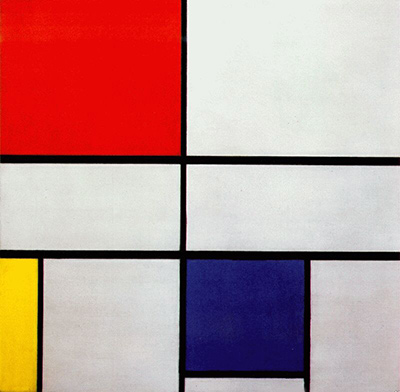Composition C aims to deliver a social equilibrium at a time of deep social unrest
This style of Mondrian's, dominant in his work across the 1920s and 1930s, aimed to show a balance through simple colour and shape. Mondrian would place his non-white blocks of colour in a way that equalled out across the canvas, whilst many new to his work would simply pick up so-called randomness of colour. In this painting he chose to go with red, yellow and blue as the focus, with black blocks producing separation lines. These were just as important to Piet and the artist did not see them as lines himself.
This style of work underlines how it can be hard to make modern art accessible to the ocassional art fan, but those who understand the context in which the artist delivered paintings like this, between the two world wars, can appreciate the depth of his thinking. This artwork came around in 1935, but the political and social message found here is clearly much subtler than other famous political paintings such as Guernica by Pablo Picasso and Viaducts Break Ranks by Paul Klee.




